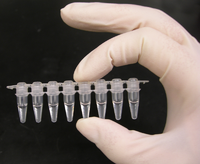
Photo from wikipedia
Abstract Antiviral innate immunity represents the first defense against invading viruses and is key to control viral infections, including SARS-CoV-2. Body temperature is an omnipresent variable but was neglected when… Click to show full abstract
Abstract Antiviral innate immunity represents the first defense against invading viruses and is key to control viral infections, including SARS-CoV-2. Body temperature is an omnipresent variable but was neglected when addressing host defense mechanisms and susceptibility to SARS-CoV-2 infection. Here, we show that increasing temperature in a 1.5°C window, between 36.5 and 38°C, strongly increases the expression of genes in two branches of antiviral immunity, nitric oxide production and type I interferon response. We show that alternative splicing coupled to nonsense-mediated decay decreases STAT2 expression in colder conditions and suggest that increased STAT2 expression at elevated temperature induces the expression of diverse antiviral genes and SARS-CoV-2 restriction factors. This cascade is activated in a remarkably narrow temperature range below febrile temperature, which reflects individual, circadian and age-dependent variation. We suggest that decreased body temperature with aging contributes to reduced expression of antiviral genes in older individuals. Using cell culture and in vivo models, we show that higher body temperature correlates with reduced SARS-CoV-2 replication, which may affect the different vulnerability of children versus seniors toward severe SARS-CoV-2 infection. Altogether, our data connect body temperature and pre-mRNA processing to provide new mechanistic insight into the regulation of antiviral innate immunity.
Journal Title: Nucleic Acids Research
Year Published: 2022
Link to full text (if available)
Share on Social Media: Sign Up to like & get
recommendations!